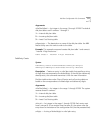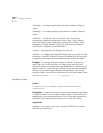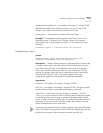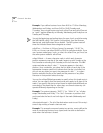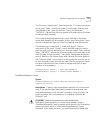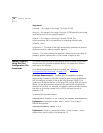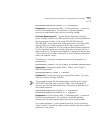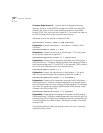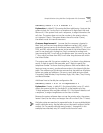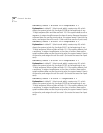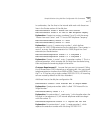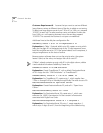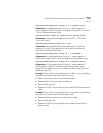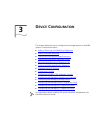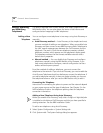
Sample Solutions Using Dial Plan Configuration File Commands 119
TableEntry Create 2 4 3 4 4 Internal 0 0
Explanation: In table ID 2 (Incoming dial plan table) entry 4 instructs the
system to look for 3 as the first in a sequence of 4 digits (both Min and
Max are 4). If the system finds such a sequence, it assigns Internal as the
call class. The system does not use the number in the priority column,
so it remains 0 (zero). The system directs the call to route 0 (zero),
the default route for internal extensions.
Customer Requirement 4. Assume that the company is located in
New York, and has two long distance telephone carriers: ABC, which
provides a low-cost service to four Boston area codes (508, 617, 781, and
978), and DEF, which provides service to the rest of the United States. You
want to use one 4-port Analog Line Card, connected to analog trunk
lines owned by ABC, for all calls to the Boston area. You want to use the
T1 line, which you lease from DEF, for all other long distance calls within
the United States.
The system users dial 9 to get an outside line, 1 to obtain a long distance
carrier, 3 digits to specify the area code, and 7 digits to specify the
telephone number. To ensure that long distance calls are handled in the
least-cost way you want, you place these entries in the Internal dial plan
table. The numbering of the entries assumes that the table has 46 entries
before you make any additions. Columns in each table entry are titled:
Command, Table Number, Entry Number, Digits, Min, Max, Class, Priority,
and Route Number.
Add these lines to the dial plan configuration file:
TableEntry Create 1 47 91 12 12 LongDistance 0 2
Explanation: Creates, in table ID 1 (the Internal table), entry 47, which
directs the system to look for the digits 91 at the beginning of any
12-digit sequence (Min and Max are both 12). If the system detects such
a sequence, it assigns LongDistance as the class of service.
Because the system software does not use the priority value, the system
leaves 0 (zero) as the value, and assigns the call to route 2 (the T1 route).
Dial plan entries are searched in sequential order. As soon as dialed digits
match a dial plan entry, the dial plan acts on that match without further
analysis. So if a previous dial plan entry (entries 1 through 46 in this
example) was matched, entry 47 would not be found or used.



